Sadovaya Yucca is a beautiful evergreen plant from the Sparazhev family, which came to us from the tropical and subtropical semi-derangements of America. In Russia, Yukku knows and grown over the century. At the end of the XIX century. This "exotic" with Lanzetovoid pointed at the ends of the leaves collected into a dense outlet, could be found in the park ensembles of palaces and garden compositions of large private land. Today, anyone can settle a magnificent beauty on their homestead and even in the city apartment! Today we will tell you how to grow yukka and provide proper care to the plant.
Content |
With all the overseas beauty of Yukki, culture can not be called a capricious. The plant, accustomed to the sharp temperature drops and the arid climate of the semi-desert, successfully adapted to the weather conditions of the middle strip of Russia. However, for a prosperous wintering, Yukku needs to be well covered by frost and snow, and the climate of the southern regions allows the plant to grow at all without any restrictions. For the content in the open ground, Yukka two species is most suitable - the nice and glorious. A distinctive feature of Yukki Nichtay consider the presence of long hairs that hang and slightly twist along the edges of rigid leaves. In Russian gardening, it is most often found precisely a nice type of Yucca, since he is more winter-hardy.
Yucca: Quick description
Yucca leaf is big and hard. Its width reaches 3 - 6 cm, and the length varies from 50 to 70 cm. In the process of growth, the lower row of sheet plates fades and, falling, becomes like a kind of skirt framing the trunk. Thanks to these large journey-green leaves, decorated with white or yellow stripes, Yucca is impossible to confuse with any other shrub.
With good care, which eliminates the freezing and rejuvenation of the plant, Yucca every year will delight the owner with pompous blossom. Initially, a strong up to 1.5 m to the height of the bloomer appears from the rosette in the form of a branched belt, and then it dresses in white, yellowish or pink robe from 80 - 150 bells up to 6 cm in diameter. View of the blooming yukka will not leave anyone indifferent.
Landing Yukki.
Yucca rightfully can be proud of its endurance, because it is not afraid of drought, heat and wind. The main danger for tropical beauty lies in excessive moisture and heavy soil, in which moisture is quickly stated.
An ideal place for planting Yukki is a spacious sunny plot, where the plant will be well ventilated. But the nizenas and highly shaded corners of the household site are completely different. The cultivation of Yukki in a half - the question is quite controversial. Insufficient lighting badly affects the appearance of the plant: its leaves lose their elasticity, crouch and thinned, and the trunk becomes more elongated. As a result, Yukka looks sloppy even with complex care.
The composition of the soil is not of great importance for this plant. The main thing is that the soil passes the air to the roots of the bush and did not contribute to the stagnation. In order to protect the plant from the stagnant water, before landing on the plots with a black soil or clay to the ground for filling the landing well, sand is added. At the bottom of the pit, they necessarily suit the drainage layer, and also enrich the soil with nozzles with humid nuts. In addition, the probability of water stagnation at the roots of Yukki can be excluded if you plant a plant on the sunny slope.
YUKKA: Care rules
After planting, the plant needs to be moderately water, remove faded leaves and flowers, commemorate to feed and trim.
Watering Yukki should be the same as for the rest of the plants, which leaves are collected in a socket: water is poured only under the root. If the moisture falls into the rosette core, Krona bush can bend and the plant will have to save the cardinal trimming.
Earth under Yucca needs to regularly loose, eliminating the weeds and dead leaves, then the roots of the plant will actively "breathe" and the putrefactive processes will never touch them. If the Yucca recently planted in the soil is bad and there are suspicions that the landing place is not the most suitable, you can still fix everything - the plant up to 3 years of age can be transplanted to another site.
Features of the transplant system of Yukki
With the arrival of cold weather, evergreen yukka "falls asleep", gaining strength before the new vegetation next spring. This is the most appropriate time to transplanting the bush - slow-down biological processes in the tissues will help the plant faster to adapt to the change of residence. When transplanting Yukki, special attention is paid to its roots - it is possible to leave them as intact and slightly moistened. After the transplantation, the bushes do not fertilize during the month, and Yukki, which remained in the former places, feed with the arrival of spring, in the summer, before Yukka blooms and after the completion of flowering.
Reaching 3 to 4 years, Yucka begins to bloom - exquisitely and for a very long time. The decorative type of carlike inflorescences is preserved up to 1 month! Yukki flower - fragrant bell, with a smell remotely resembling an aroma of expensive soap. Fruits in the plants appear only under wildlife conditions and represent round boxes up to 5 cm in diameter. At this time, the plant is supported by fertilizer with complex mixtures, which prevails nitrogen. The feeder is stopped 1 month before the coming of autumn. Such a measure will allow the plant to prepare for the cold and safely overwhelm.
How to protect the yuk from freezing
The sudden appearance of snow in the fall or spring evergreen bush perceives calmly, provided that snow precipitates will disappear during a couple of days. But with a steadily low temperature of the honest winter, Yukka may die.
The most vulnerable site of the bush is the growth point hidden in the center of the socket, the second place in the weak resistance of the cold occupy the vegetative roots of the plant. In order to prevent the yukki damage to the arrival of winter for tropical culture, a frame shelter is prepared in the form of a spacious drawer with a height equal to the size of an adult plant instance. Before hiding the bush, its sheet plates bend up up and with the help of a strong twine collected in a large bundle. Then the plant is covered with a drawer, which is laying from above with a sweetheart or a thick layer of fallen leaves. All the construction is wrapped with underfloor material and for reliability stuck with scotch. Such a shelter will help Yukka comfortably overreim and meet the spring in all its glory.
The drawer is removed from the bush when the danger of unexpected frost disappears. If the plus temperature is stable, it is impossible to slowly slow down, otherwise the plant will actively absorb oxygen and prepare for the vegetative period in a closed space, and this is fraught with the appearance and rapid spread of the spore of the mold fungus.
Reproduction of Yukki
Yukka in the photo that you see below, lush and beautifully blooms, however, in the conditions of the middle strip seed, this bush will not give. However, in domestic gardening there are several ways to multiply an exotic beauty without the use of seeds.
To obtain a young independent plant, a daughter outlet will need, which is formed at the foot of the adult bush. In order for the reproduction to be successfully successful, the decodes should have developed roots. Thanks to its own root system, "kids" will be able to quickly acclimatize and quickly go into growth in a new place. We can easily separate the grain of adulthood with an adult yukka, and after disconnecting they require the same care as the parent plant. The only nuance is that the places of cuts on the "kids" are very vulnerable to the causative agents of all sorts of infections. To protect the child sockets from infection, they are dried and sprinkled with a powder of crowding coal or cinnamon.
In the spring during transplantation from a healthy yukka root, several cuttings of 5 - 10 cm in size are cut. After treatment with coal, they are planted into a greenhouse, sprinkling an important mixture of sand and peat. After some time, sleeping kidneys give young sprouts.
There is another way, thanks to which you can not only get the offspring from Yukki, but also rejuvenate the maternal bush, if with age he scratched and lost compactness. Such an effect is achieved by trimming - a simple procedure will give an adult bush a well-groomed look and will obtain a lot of high-quality planting material.
How to trim the yukka
Yucca is a plant that awakens early in spring, so pruning is best to spend at this time of year. Yucca has the only point of growth, so the stem cut completely stops the vertical development of the bush. Nevertheless, the life of the flower does not fade - the stems are awakening sleeping until this moment of the kidney, of which new outlet will begin to form. Using trimming, the plant can also be rid of the leaves spoiled with rotten or frost. 2 days before cutting yukka watered the last time.
The operation itself is made as follows: a clean and well-sharpened knife is carefully cut off part of the plant so that the slice location remains holistic - without splitting the stem and the detached bark. It should be monitored so that the slice is made at a distance of 8 - 10 cm from the growth line of the leaf plates. Furious "wounds" on the top and trunk are poured with a fungicidal agent and powder of charcoal. On the top of the hemp, which was formed after trimming, you can apply a protective layer of garden preparation. After 2 - 3 weeks, new sprouts will be thrown on the old plant. If the yucca is very strong, with great potential, it will give from 3 to 5 kidneys, and small bushes can be put into the growth of only 1 - 2 kidneys.
Cut up the top should not be thrown out - you can get a new garden yuk from it. Initially, the seedlock needs to be rooted in greenhouse, while it is necessary to control the moderate humidity of the sandy substrate and prevent the appearance of condensate.
Yucca Garden: pests and diseases
If Yucca is in the overwhelmed soil for a long time, it threatens the attack of root and stem rot. For the same reason, the immunity of the plant falls and it becomes a target for the disease of fungal and bacterial nature. If the yukki leaves were filled, and the trunk was covered with dark spots, you may not doubt the bush sick. It is necessary to immediately remove the affected areas, and those that survived, to be treated with a fungicidal agent. For a while, while the plant recovers, watering is reduced, and the spraying refuses at all. Unfortunately, in most cases, it is impossible to eradicate the rot, therefore it is easier to cut off and root a healthy tip of Yukki, and from the damaged part of the plant immediately get rid of.
How to care for yucca at home
Evergreen tropical beauty Many flower growers are grown at home. Sitting in the pot of Yucca can reach the height of two or more meters, without losing its decorativeness.
You can buy ready-made yucca in any flower shop - today the plant is very popular. An elegant trees will need some time on acclimatization in new conditions for it. When the plant is finalized, it needs to be transplanted from the store in a full-fledged with the soil nutrients. The features of Yukki transshipment to a new pot will tell the video:
The best room nichlya yukka will feel near the southern, brightly illuminated windows. In the summer, the pot with a plant can be placed on the balcony so that the YUKKA is soaring under the right sunlight. If there is no possibility of temporary resettlement of home "palm" to open air, the room needs to be regularly ventilated in spring and summer, following the YUKKA not standing on draft.
At home, the tropical plant feels perfectly at a temperature of +8 - +25 0S. In regular spraying, the drought-resistant yukka does not need, but it is impossible to refuse this procedure, because it is a good way to clean her leaves from dust. It is important to monitor that the outlets are not filled with water and do not spray the plant under direct sunlight, otherwise burns may appear on it.
An alarm that the yukka is time to water, is the burning of the upper layer of the soil. In the warm season, watering may be abundant, and in the winter it needs to be minimized. Big Yucca loses more moisture, respectively, and water requires more than a small palm.
Room yukka feed 1 time in 3 weeks from spring and until the end of summer. As fertilizers, diluted mineral compositions and organic nutrition based on cow or horse manure are suitable. A homemade plant does not need feeding in winter during illness, as well as immediately after transplantation and rooting.
Yucca is not a supporter of frequent transfers. In a new pot, the plant is sent when it is already closely closely (roots sprouted through holes), and also if you need to save it from too moistened and ground soil.
A new container is selected for several centimeters more than the former, and Yucca will quickly go into growth. In order to suspend the growth of room palm trees, ¼ part of its roots cut off and plant a plant into an old pot, filled with new earth. Too big copies do not transplange, but only update 1 time a year of the upper centimeters of the soil, changing the old Earth to the new one.
The owner of the room Yukki may face several problems for this plant:
- At the palm tree dries down the bottom leaves. It is not worth worrying about this, since it is a pattern. But if the yukki is getting and dried up the upper leaves, most likely, it lack moisture, so the watering program needs to be revised and correcting.
- In the premises where it is too dry, Yukka can attack the hordes of the web ticks. The plant dries and covered by the web of the leaves, and their surface is dissolving yellow stains. To get rid of pests, a weak tobacco solution, onion and garlic infusions are used to treat palm trees. The chosen yuk is wiped towards the leaves from the trunk.
- With the appearance of the larvae of the shield, the economic soap is used. It prepare a solution and processed by the leaves. You can also use a soap solution with the addition of tobacco, kerosene and a small part of the denatured alcohol. This means spray the plant.
- In the cold season, when natural lighting is not enough, Yucke is difficult to be indoors with central heating. For such conditions, palm leaves react with yellowing. To stop a destructive process, the plant is removed away from the batteries and provide it as much natural light as possible.
Despite such nuances, Yucca is recognized as one of the most undemanding indoor plants. In compliance with the elementary rules of care for it, you decorate your housing exotic colorful palm.

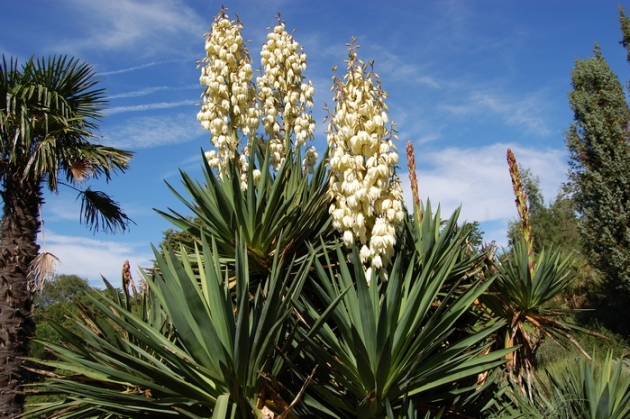
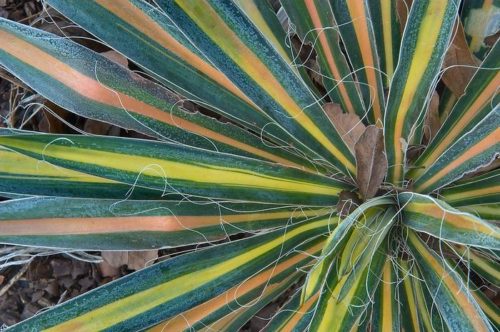
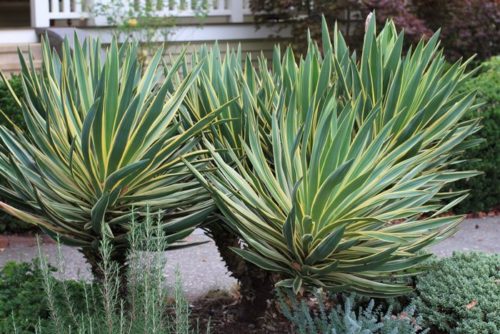

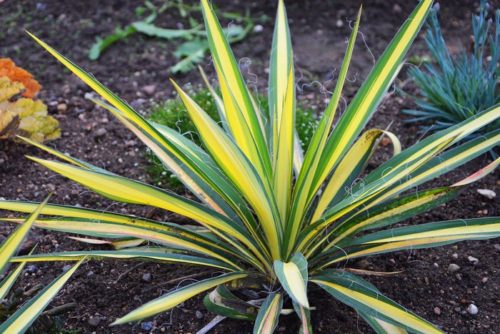
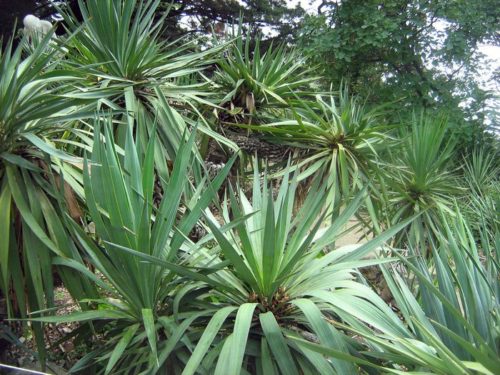
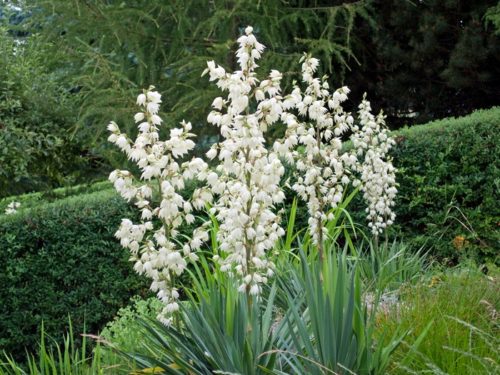
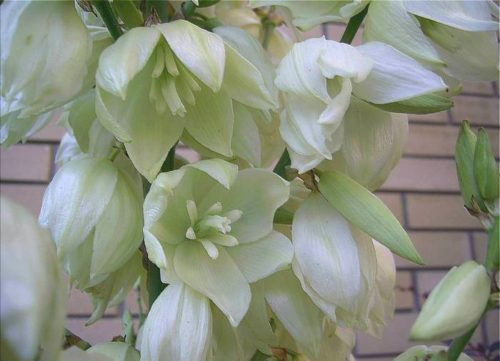
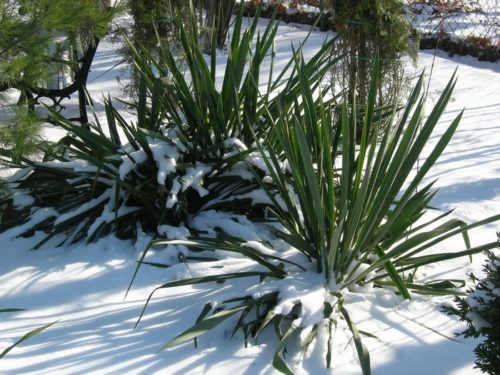
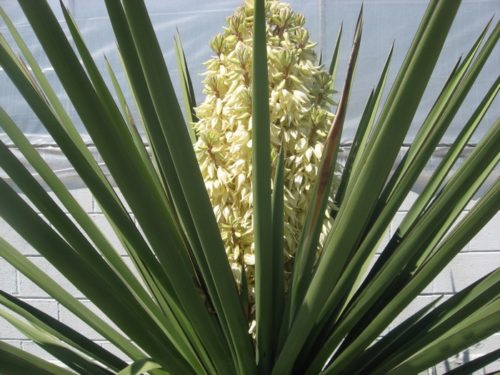
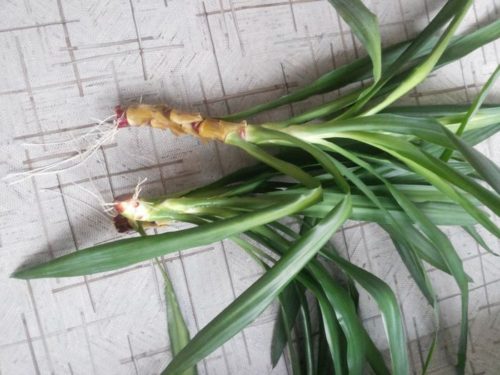
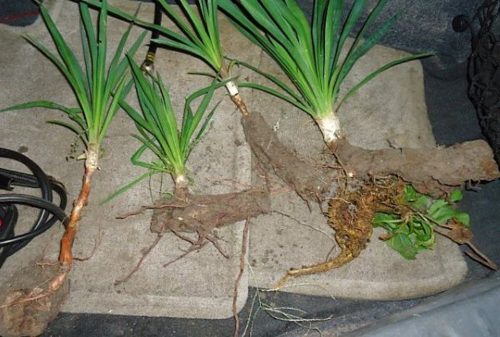
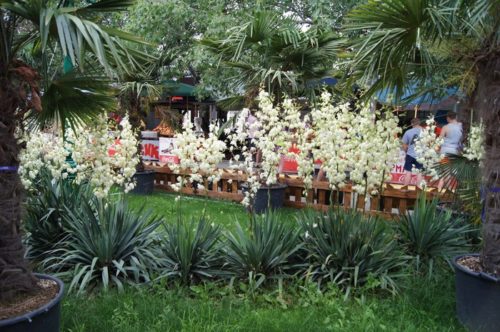
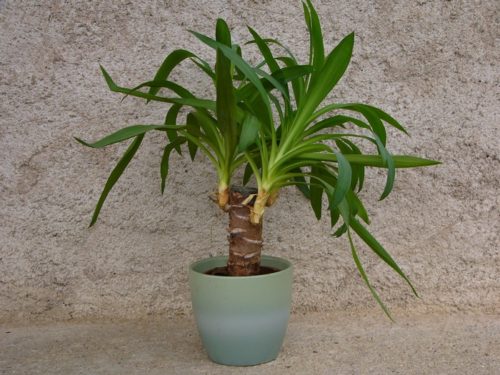
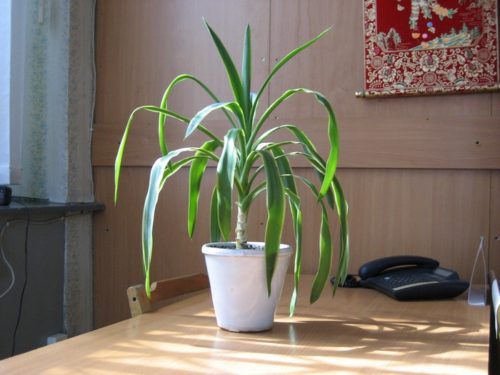












 Start a discussion ...
Start a discussion ...